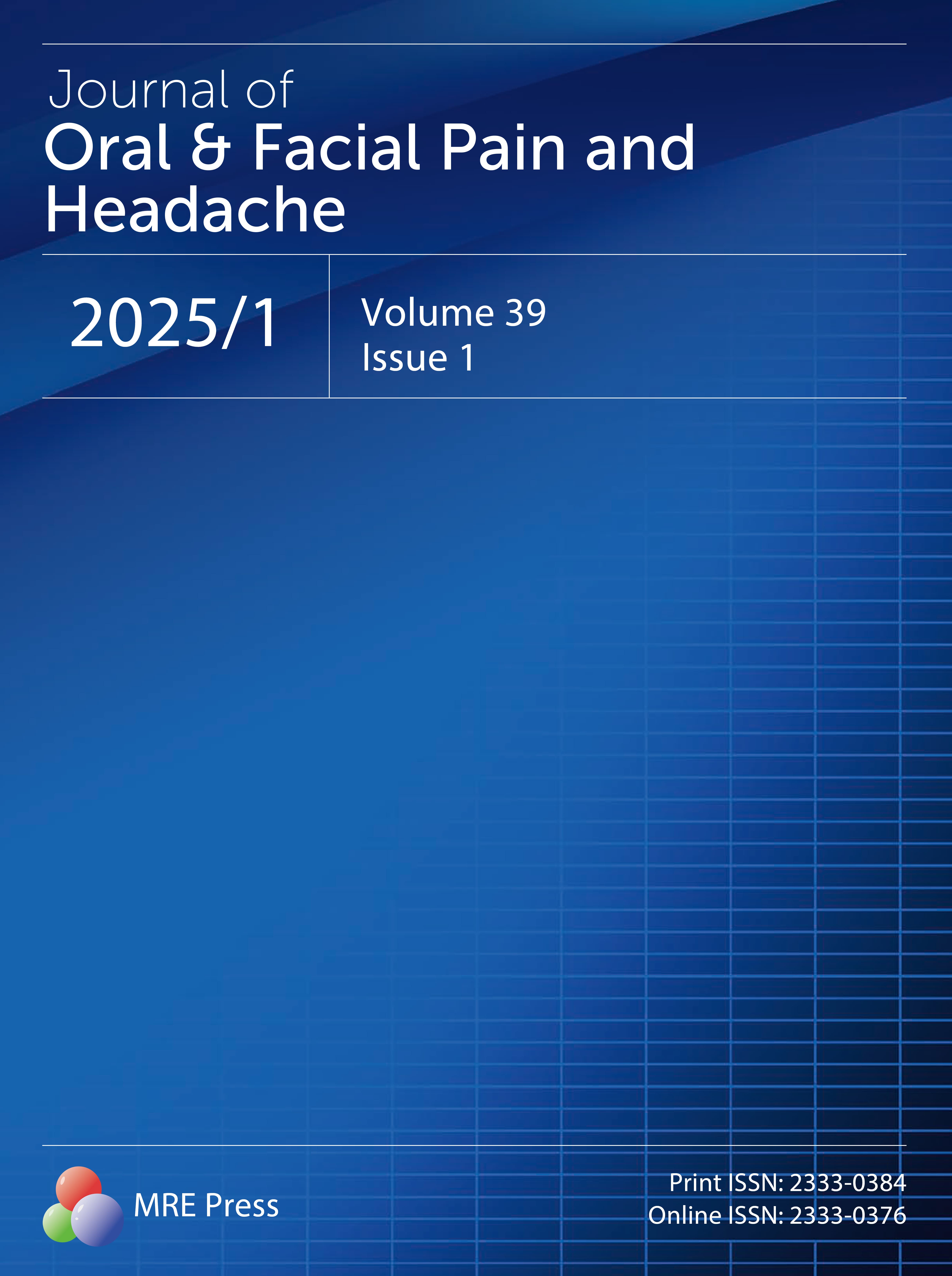Title
Author
DOI
Article Type
Special Issue
Volume
Issue
Article Menu
Export Article
More by Authors Links
Article Data
- Views 655
- Dowloads 66
Journal of Oral & Facial Pain and Headache (OFPH) is published by MRE Press from Volume 38 lssue 1 (2024). Previous articles were published by another publisher on a subscription basis, and they are hosted by MRE Press on www.jofph.com as a courtesy and upon agreement with Journal of Oral & Facial Pain and Headache.
Original Research
Open AccessEvaluation of Temporomandibular Joint Internal Derangement
Evaluation of Temporomandibular Joint Internal Derangement
1McMaster University Medical School, Hamilton, Ontario, Canada
2Faouity of Dentistry, University of Toronto, Staff Dentist and Pathologist, Mount Sinai Hospital, Toronto, Ontario, Canada
3Faculty of Dentistry, University of Toronto, Toronto. Ontario, Canada
4Faculty of Dentistry, University of Toronto, Staff Scientist, Samuel Lunenfeld Research Institute at Mount Sinai Hospital, Toronto, Ontario, Canada
*Corresponding Author(s): H C Tenenbaum E-mail:
Abstract
The incidence of internal derangement of the temporomandibular joint has been documented in patients with temporomandibular disorders. However, the detection and diagnosis of a displacement of the temporomandibular joint disc in relation to internal derangement is not always accurate, and it varies according to the method of examination. A prospective clinical investigation of 26 patients (45 temporomandibular joints) with signs and symptoms of temporomandibular joint pain and dysfunction was completed to examine the accuracy of clinical examination, sagittal recording device tracings, arthrography, and magnetic resonance imaging in detecting internal derangement in the temporomandibular joint. A group of 16 asymptomatic control subjects (32 temporomandibular joints) was examined for the presence of internal derangement by the methods under consideration. Incidence of bilateral internal derangement in the temporomandibular joints of the symptomatic patients was also assessed. Findings obtained through clinical examination and sagittal recording device tracings agreed most often with the arthrographic findings of internal derangement. Magnetic resonance imaging often failed to detect the presence of arthrographically detected internal derangement. Internal derangement was identified bilaterally in a significant number of patients, despite the absence of bilateral symptoms. This incidence varied according to the technique used. In the control group, 9% of the temporomandibular joints that had been assessed as normal according to clinical examination and sagittal recording device tracings were found to have internal derangement according to magnetic resonance imaging.
Cite and Share
Gianfranco G. Romanelli, Richard Harper, David Mock, Michael J. Pharoah, H C Tenenbaum. Evaluation of Temporomandibular Joint Internal Derangement. Journal of Oral & Facial Pain and Headache. 1993. 7(3);254-262.
References

Abstracted / indexed in
Science Citation Index (SCI)
Science Citation Index Expanded (SCIE)
BIOSIS Previews
Scopus
Cumulative Index to Nursing and Allied Health Literature (CINAHL)
Submission Turnaround Time
Editorial review: 1 - 7 days
Peer review: 1 - 3 months
Publish Ahead of Print: within 2 months after being accepted
Notes: Your information is kept confidential throughout the review process.
Top
